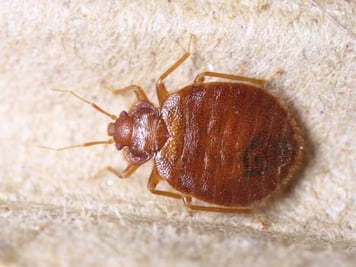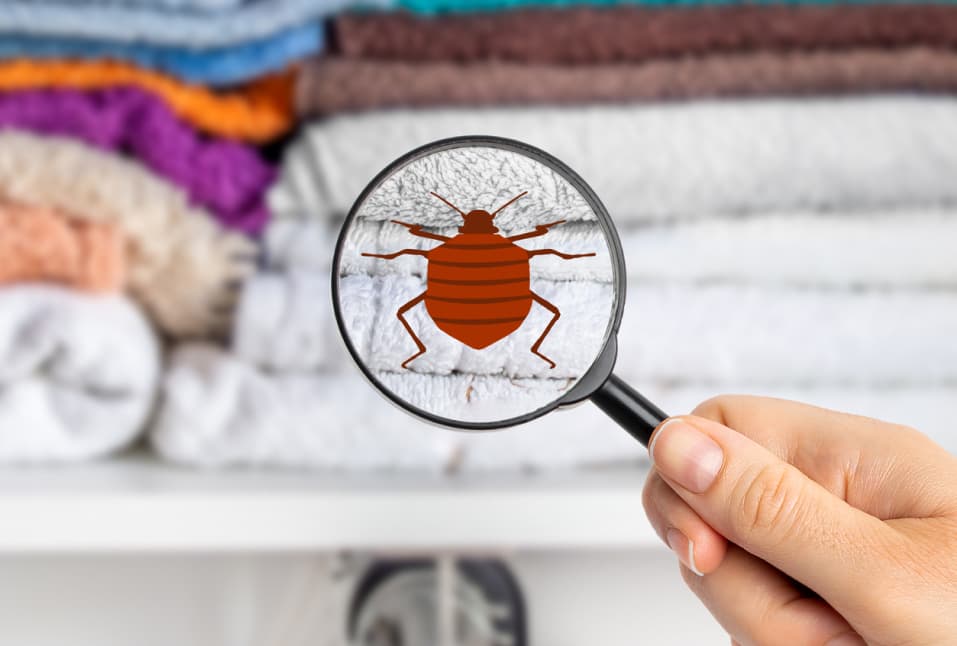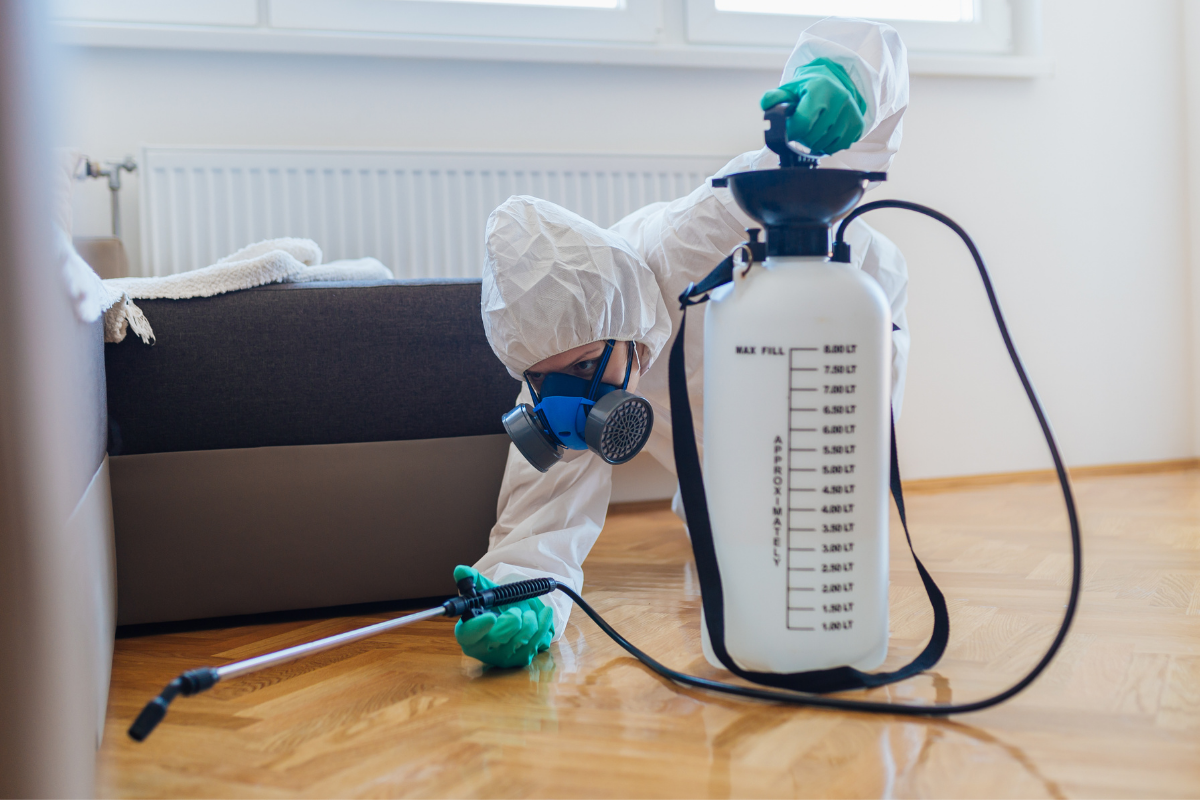Top-rated Philly Bed Bug Exterminator in Philadelphia: Effective Pest Control Solutions
Insect Control Provider Demystified: The Science Behind Removing Insects and pests
Pest control solutions play an essential function in maintaining the health and wellness of our living and working environments. Behind the relatively routine job of getting rid of insects exists a fascinating world of scientific principles and techniques that drive the process of parasite administration. From recognizing the elaborate behavior patterns of parasites to employing advanced modern technologies for their removal, the realm of parasite control operates a structure of understanding that extends far past just wiping out undesirable intruders. As we check out the elaborate scientific research behind insect removal, we reveal a world where biology, technology, and chemistry merge to fight these resistant adversaries.
Insect Habits Analysis
Analyzing parasite habits is essential in developing efficient pest control approaches for both domestic and business settings. By comprehending the practices and patterns of insects, parasite control experts can apply targeted and reliable solutions to get rid of infestations.
Moreover, researching pest actions aids in figuring out one of the most suitable approaches of insect control. Various bugs might require various approaches, such as capturing, baiting, or chemical therapies. For instance, knowing that a particular sort of insect is mostly energetic at night can assist in organizing treatments for maximum efficiency. In general, a detailed evaluation of bug behavior is essential for establishing personalized pest administration strategies that are both eco-friendly and highly efficient.
Integrated Insect Administration Methods
Integrated Insect Management Strategies entail detailed approaches that make use of a mix of safety nets, biological controls, and checking to successfully handle bug populations. Safety nets intend to get rid of factors that bring in insects, such as food and water sources, by applying appropriate hygiene techniques. This includes securing crevices and cracks, dealing with leaks, and saving food in impermeable containers. Biological controls involve presenting natural killers or bloodsuckers to manage pest populaces, minimizing the need for chemical pesticides. Releasing ladybugs to prey on aphids in a yard is a common organic control approach. Surveillance plays a vital role in Integrated Insect Monitoring by consistently checking and recognizing pest populaces to establish the most ideal control techniques. By utilizing a mix of these techniques, parasite control solutions can minimize the environmental effect of insect monitoring while effectively lowering pest populations in a lasting way.
Eco-Friendly Insect Control Solutions
With a focus on sustainability and ecological awareness, environmentally friendly insect control services provide a natural and efficient alternative to conventional chemical pesticides. These techniques prioritize using non-toxic ingredients derived from plants, minerals, or other organic resources to fight parasite problems without triggering damage to the environment, human beings, or non-targeted varieties.
One prominent green technique is biological pest control, which entails introducing all-natural predators, parasites, or pathogens to handle insect populations. By harnessing the power of nature's very own checks and equilibriums, this technique can efficiently control parasites without the requirement for unsafe chemicals. In addition, agricultural pesticides derived from plants like pyrethrum, garlic, and neem have shown pledge in warding off or killing insects while continuing to be risk-free for advantageous insects and pets.
Additionally, green insect control remedies typically concentrate on preventative steps such as sealing access points, eliminating food and water resources, and maintaining Web Site correct sanitation to hinder insects from infesting structures. By incorporating these sustainable practices, bug control solutions can efficiently remove bugs while reducing ecological impact.

Duty of Innovation in Pest Removal
Modern innovations in innovation have actually reinvented the area of pest removal, boosting the effectiveness and performance of parasite control services. The integration of modern technology in parasite administration has actually significantly look at here now boosted the accuracy of parasite detection, enabling targeted treatment approaches. Among the essential technical tools in parasite control is using remote surveillance gadgets, such as sensors and electronic cameras, which aid in determining bug hotspots and monitoring insect activities. These gadgets provide real-time information, allowing pest control specialists to make educated choices swiftly.
Furthermore, the development of eco-friendly chemicals and lures that are a lot more targeted towards specific parasites has been implemented through technical improvements. This targeted strategy reduces the total usage of chemicals, decreasing ecological effect while successfully managing pest populations. Additionally, the use of drones for airborne studies and targeted pesticide application in hard-to-reach areas has structured parasite control procedures.

Significance of Routine Insect Inspections
Normal pest evaluations are critical for preserving a pest-free atmosphere and preventing infestations from holding - philly pest control service philadelphia bed bugs. By performing regular assessments, home owners can discover bug issues early on, permitting swift and targeted interventions to remove the pests before they spread out and replicate. These examinations supply a possibility to identify possible access factors where pests can infiltrate the premises, making it possible for positive steps to seal these accessibility factors and protect against future infestations
Furthermore, regular insect assessments can assist protect the health and wellness of passengers by ensuring that the atmosphere continues to be without disease-carrying insects and allergens. Early detection of pests like rats, roaches, or bed insects can avoid wellness dangers associated with their existence, such as allergic responses, contamination of food and water resources, or the transmission of conditions.
Along with securing human health and wellness, regular pest evaluations are crucial for protecting the architectural stability of buildings. Particular pests, such as termites, can cause substantial damages to wooden frameworks if left uncontrolled. With regular evaluations, homeowner can determine termite infestations early and apply actions to stop costly architectural fixings.
Conclusion

Examining pest actions is vital in establishing effective parasite control strategies for both property and business setups.Integrated Bug Management Strategies include comprehensive approaches that use a combination of precautionary measures, biological controls, and keeping an eye on to effectively manage insect populaces. By utilizing a mix of these methods, parasite control services can decrease the environmental effect of parasite monitoring while successfully minimizing pest populations in a lasting way.
One of the essential technological devices in insect control is the use of remote surveillance gadgets, such as sensors and cams, which assist in identifying bug hotspots and tracking pest movements (philly bed bug treatment philadelphia).In verdict, comprehending insect habits, applying incorporated bug management techniques, utilizing environmentally friendly services, integrating innovation, and carrying out regular examinations are necessary parts in effectively getting rid of bugs